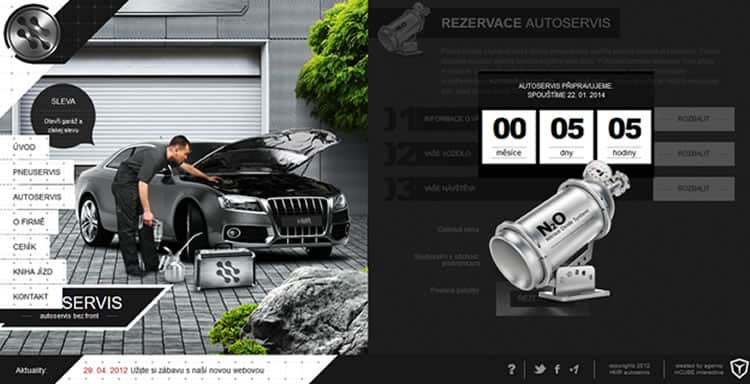
So you have an immersive website with the right aesthetic appeal. What is the next practical step? It is to prevent bounces and enhance on-site user engagement.
However, most marketers are stuck at fluffing their website and pruning their social media page. A successful conversion model includes everything from on-site optimization to neat navigation and most websites take these in their stride. Despite that they have extremely high bounce rates. Could it be the lack of right information, prices or something intangible altogether?
Here we shall discuss effective ways of preventing bounces and enhancing user engagement that leads up to increased conversions.
1. Target the Right Sources for Website Visitors
Each website is unique and so is each visitor. You may generalize your group but know that each type of visitor comes from a specific source. For instance, a 30 y.o. tech nut will be more trusting about peer reviews on social sites. Now if you analyze your website traffic, you will see three distinct steps in conversion:
- Awareness brought about by search and discovery,
- Consideration after carefully looking at reviews, research and social media sites, and
- Action (Purchase or Bounce).
Find out the sources from where your visitors come, based on that decide the type of information they are looking for on your website and then give a personalized experience thus enhancing user engagement. If your visitor came from a reference link on a blog on pesticides, don’t make them search amongst hundreds of gardening tools and seeds and plants. Sure they are pretty to look at but it won’t serve the purpose and hence the end result could be a compromised bounce rate.
2. Let Data Show You the Way
There are several methods to acquire data of website engagement; Google Analytics is the most popular of all. The data thus acquired is extremely important to understand that whether your website is successfully retaining visitors and giving them something to learn, see of discover.
Commonly, inbound links are able to get traffic from all over the world, but only 40-50% of it is relevant traffic. They caveat here is to successfully keep that 40-50% engaged enough on your website, so they take some actionable steps like buy, subscribe, bookmark, share etc.
Another important part of data analysis is user behavior. Measure session duration to see if they were just site hopping or were they looking for something seriously. Users will give you 35 seconds before they decide that you are not what they are looking for. Session duration will let you understand if majority of your users think that way. And if the answer is yes, you better start taking reformative steps to enhance user engagement.
Page-wise performance data is the third step in the way. It allows you to do A/B testing and decide what works best for your audience. If you have multi-group audience, it allows you to cater for various contents based on the group taste.
3. Create Immersive Experiences for Visitors
Immersive experience is more than a buzzword. We don’t wish to burden you with the hackneyed example of Amazon and how they created an immersive experience, so we have found some of the best immersive websites on the internet. Take a cue from them and discover ways you can create an immersive experience for your visitors. From interesting blog posts to videos, the ways and means to keep your audience hooked are surprisingly simple and inexhaustible.
Ask 3 questions to yourself if you wish to create an immersive website:
- Are we offering more than they thought / wanted?
- Are we giving something new, something irresistible?
- Have we taken an unbeaten path?
Check out how this Auto Service facility created an amazing immersive experience on their website. Surely they didn’t need to do it, but they did it anyways and the path less trodden led them to great success.

And now see the typical car service website and the likes of which you find in abundance on the internet.

4. Carry the Experience Beyond Your Website
This is one boat you simply can’t miss. Over these last couple of years, triggered emails or auto-responders have become one of the most important user engagement tactics. However, simple emails with ‘Howdy’ and ‘We Miss Ya’ or persistent emails and reminders won’t do. You have to carry the soul of your website theme and create a similar experience in emails. The same goes for social media and PR. This is one powerful way to garner repeat visits.
5. Watch the Calendar
It is very important to gauge user engagement at a certain time of the day, certain days of the week, certain holidays, certain months of the year and so on. You will notice a hike in traffic at a particular period. Get to the root of it: Why was there a hike? What was the bounce rate then? Was it because of a particular offer or an event you organized? … and so on. Again Google Analytics allows you to compare activity in a particular period with activity in another period.
6. Be Like the Giraffe
Did you know that in New Age religion, the giraffe is considered as being a symbol for intuition and flexibility?
It is extremely easy to find yourself lost in the labyrinths of data and social media, thus forgetting your innate sense of intuition. Most of the times we don’t trust our instincts and see what is laid out right in front of our eyes. Get a bird’s eye view of your website or see it from a solely unattached point-of-view. This will help you to forget all the mind-numbing rules and metrics and discover a simpler and effective way to keep your users engaged. Also, learn from the giraffe to be flexible and ready for change.
Take Away
Once the user interface and user experience problems are out of your way, the only thing that remains to focus on is user engagement. It is extremely crucial to keep your users engaged and keep coming for more in order to build a loyal audience. These 6 powerful rules to enhance user engagement will help you bring down bounce rates and lead to successful conversion.
Want to learn more?
Are you interested in the intersection between UX and UI Design? The online courses on UI Design Patterns for Successful Software and Design Thinking: The Beginner’s Guide can teach you skills you need. If you take a course, you will earn an industry-recognized course certificate to advance your career. On the other hand, if you want to brush up on the basics of UX and Usability, try the online course on User Experience (or another design topic). Good luck on your learning journey!
(Lead image: Depositphotos)
